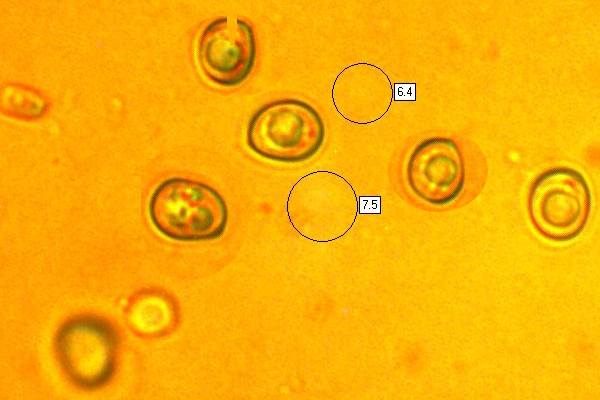Pluteus phlebophorus (Ditmar) P. Kumm. - Wrinkled Shield
Phylum: Basidiomycota - Class: Agaricomycetes - Order: Agaricales - Family: Pluteaceae
Distribution - Taxonomic History - Etymology - Identification - Culinary Notes - Reference Sources
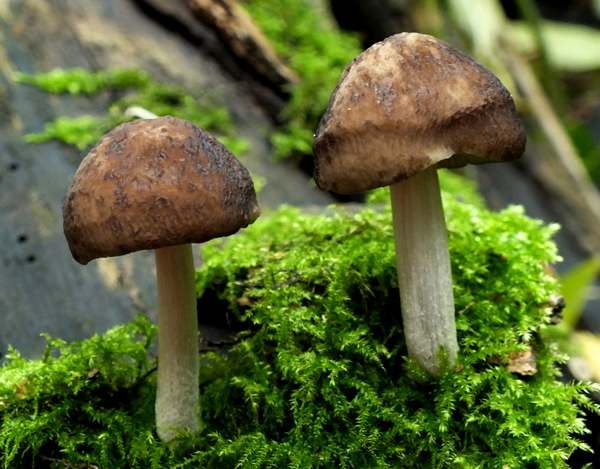
Shield fungi are often striking but rarely distinctive, and the Wrinkled Shield sounds as though it should be one of the exceptions but unfortunately it is not. Many other shield mushrooms can have radially-wrinkled caps, and so all distinguishing characters need to be observed in order to ensure a conclusive identification.
Distribution
Widespread but rather uncommon in England, Wales and Scotland but not officially recorded in Ireland, this wood-rotting mushroom is also found in some parts of mainland Europe. I have found no authenticated reports of this species occurring in North America.
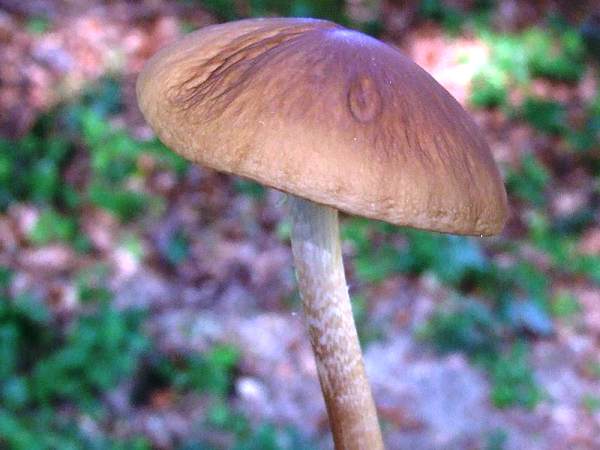
Picture above courtesy of Jerzy Opiola, (Own work) [CC BY-SA 3.0 (http://creativecommons.org/licenses/by-sa/3.0) or GFDL (http://www.gnu.org/copyleft/fdl.html)], via Wikimedia Commons
Taxonomic history
This woodland mushroom was described in 1817 by Fr. L P Ditmar, one of the most mysterious figures in mycological history. Little is known about this German priest save for his various publications on mycological topics between 1806 and 1817. The currently accepted scientific name Pluteus phlebophorus dates from an 1871 publication by a much more well-known German mycologist, Paul Kummer.
Synonyms of Pluteus phlebophorus include Pluteus chrysophaeus (albeit missapplied) and Agaricus phlebophorus Ditmar.
Etymology
Pluteus, the genus name, comes from Latin and literally means a protective fence or screen - a shield for example!
The specific epithet phlebophorus comes from the Greek words phlebo- meaning blood vessels or veins, and -phérō meaning to bear or carry - hence we have 'bearing veins', a reference to the vein-like wrinkles on the cap of this woodland fungus.
Identification guide
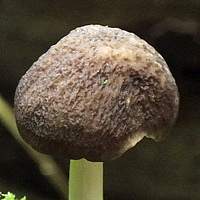 |
Cap2 to 6cm across, initially hemispherical or campanulate, becoming broadly complex or flattening with a broad low umbo; surface with vein-like radial wrinkles deepest near the cap centre; varying from light brown, through pinkish brown, tan, mid brown to dark brown. |
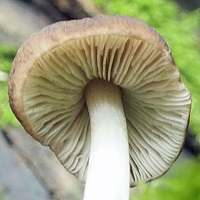 |
GillsFree; crowded; white, turning pink or brownish-pink as the spores mature. StemCylindrical, sometimes broadening slightly at the base; 3 to 6cm long and 2 to 8mm diameter; smooth or slightly fibrillose; white or pale cream background, yellowing and turning slightly yellow-brown with age; no stem ring. The stem flesh is white or very pale brown. |
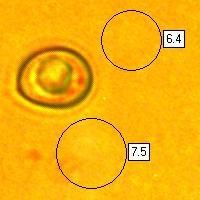 |
SporesBroadly ellipsoidal or subspherical, smooth, 7-8 x 5-7µm. Spore printPink. |
Odour/taste |
Usually not distinctive; sometimes with a faint radish-like odour. |
Habitat & Ecological role |
In common with other shield mushrooms, this is a wood-rotting (saprobic) fungus. Fallen hardwood trunks and large branches that have been left to rot and gather moss for several years appear to be the Wrinkled Shield's staple diet, although sometimes these mushrooms appear on damp sawdust heaps or on wood chips, particularly in forests where trees are harvested by selective thinning rather than by clear felling. These beautiful mushrooms tend to be either solitary or at best they occur in very small groups. |
Season |
Fruiting in summer and autumn. |
Similar species |
Pluteus cervinus is usually larger and has a smooth brown or fawn cap. Pluteus chrysophaeus has a bright yellow cap. |
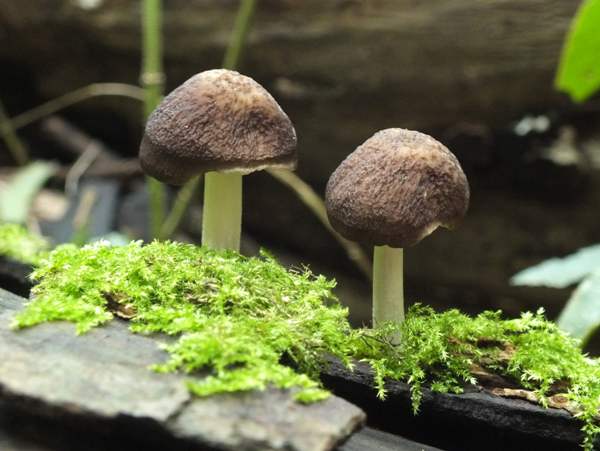
Culinary Notes
The Wrinkled Shield is not generally considered to be a good edible mushroom, and in view of its relative rarity I recommend that this mushroom should not be gathered for eating.
Above: Wrinkled Shield fungi, France; picture by Strobilomyces (Own work) [CC BY-SA 3.0 (http://creativecommons.org/licenses/by-sa/3.0) or GFDL (http://www.gnu.org/copyleft/fdl.html)], via Wikimedia Commons
Reference Sources
Fascinated by Fungi, 2nd Edition, Pat O'Reilly 2016, reprinted by Coch-y-bonddu Books in 2022.
Funga Nordica: 2nd edition 2012. Edited by Knudsen, H. & Vesterholt, J. ISBN 9788798396130
Alfredo Justo, Andrew M. Minnis, Stefano Ghignone, Nelson Menolli Jr., Marina Capelari, Olivia Rodríguez, Ekaterina Malysheva, Marco Contu, Alfredo Vizzini (2011). 'Species recognition in Pluteus and Volvopluteus (Pluteaceae, Agaricales): morphology, geography and phylogeny'. Mycological Progress 10 (4): 453–479.
Orton, P.D. (1986). British Fungus Flora: Agarics and Boleti. Vol 4. Pluteaceae: Pluteus & Volvariella. Royal Botanic Garden: Edinburgh, Scotland.
BMS List of English Names for Fungi
Dictionary of the Fungi; Paul M. Kirk, Paul F. Cannon, David W. Minter and J. A. Stalpers; CABI, 2008
Taxonomic history and synonym information on these pages is drawn from many sources but in particular from the British Mycological Society's GB Checklist of Fungi.
Fascinated by Fungi. Back by popular demand, Pat O'Reilly's best-selling 450-page hardback book is available now. The latest second edition was republished with a sparkling new cover design in September 2022 by Coch-y-Bonddu Books. Full details and copies are available from the publisher's online bookshop...
